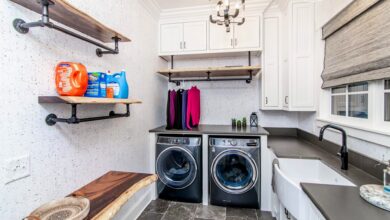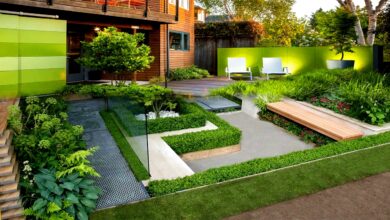How to Start a Vegetable Garden at Home: A Beginner’s Guide
This comprehensive guide will walk you through every step to start a vegetable garden at home, from planning and soil preparation to planting and maintenance.

Start a vegetable garden at home is a rewarding and sustainable way to enjoy fresh, organic produce right from your backyard. Whether you have a spacious yard or a small balcony, growing your own vegetables is easier than you think. This comprehensive guide will walk you through every step to start a vegetable garden at home, from planning and soil preparation to planting and maintenance.
Why Start a Vegetable Garden at Home?
Before diving into the steps, let’s explore why home vegetable gardening is worth the effort:
- Fresh, Nutritious Produce: Homegrown vegetables are free from harmful pesticides and packed with nutrients.
- Cost-Effective: Growing your own food reduces grocery bills.
- Eco-Friendly: Reduces carbon footprint by cutting down on transportation and packaging.
- Therapeutic Benefits: Gardening is a great stress-reliever and promotes mental well-being.
Now, let’s get into the step-by-step process to start a vegetable garden at home.
Step 1: Choose the Right Location
The success of your vegetable garden depends heavily on location. Here’s what to consider:
Sunlight Requirements
Most vegetables need 6-8 hours of direct sunlight daily. Observe your yard to find the sunniest spot. Leafy greens (like spinach and lettuce) tolerate partial shade, but tomatoes, peppers, and cucumbers thrive in full sun.
Accessibility to Water
Your garden should be near a water source for easy irrigation. Consistent watering is crucial for healthy plant growth.
Soil Drainage
Avoid low-lying areas where water pools. If your soil is clay-heavy, consider raised beds or containers for better drainage.
Step 2: Decide on the Garden Type
Depending on your space and preference, choose one of these garden styles:
In-Ground Garden
Traditional and cost-effective, but requires good soil preparation. Best for those with ample yard space.
Raised Beds
Ideal for poor soil conditions. They improve drainage, reduce weeds, and make gardening easier on the back.
Container Gardening
Perfect for small spaces like balconies or patios. Use pots, grow bags, or window boxes for herbs, lettuce, and dwarf varieties.
Vertical Gardening
Maximizes space by growing plants upwards on trellises, shelves, or hanging planters. Great for cucumbers, beans, and peas.
Step 3: Prepare the Soil
Healthy soil = healthy plants. Follow these steps for optimal soil preparation:
Test Your Soil
Use a home testing kit or send a sample to a lab to check pH and nutrient levels. Most vegetables prefer a pH of 6.0-7.0.
Amend the Soil
- For Clay Soil: Add compost, sand, or peat moss to improve drainage.
- For Sandy Soil: Mix in organic matter like compost or manure to retain moisture.
- For All Soil Types: Incorporate 2-3 inches of compost to boost fertility.
Consider No-Dig Gardening (Lasagna Method)
Layer cardboard, compost, straw, and mulch directly on the ground to create nutrient-rich soil without tilling.
Step 4: Choose the Right Vegetables
As a beginner, start a Vegetable Garden with easy-to-grow:
Best Vegetables for Beginners
- Leafy Greens: Lettuce, spinach, kale (fast-growing, shade-tolerant).
- Root Vegetables: Carrots, radishes, beets (simple to grow).
- Tomatoes & Peppers: Need sun but are highly rewarding.
- Herbs: Basil, parsley, mint (great for containers).
Consider Your Climate
Check your USDA Hardiness Zone to determine the best planting times. Some vegetables thrive in cool weather (spring/fall), while others need warmth (summer).
Step 5: Plan Your Garden Layout
A well-planned garden maximizes space and sunlight. Follow these tips:
Companion Planting
Some plants grow better together:
- Tomatoes + Basil: Improves flavor and repels pests.
- Carrots + Onions: Deters carrot flies.
Avoid planting beans with onions or potatoes with tomatoes (they compete for nutrients).
Spacing & Plant Arrangement
- Tall Plants (Corn, Tomatoes): Place on the north side to avoid shading smaller plants.
- Medium Plants (Peppers, Eggplant): Middle rows.
- Low-Growing (Lettuce, Radishes): South side for maximum sun.
Step 6: Planting Your Vegetables
Now, it’s time to plant! You have two options:
Starting from Seeds
- Indoor Sowing: Start a Vegetable Garden by seeds indoors 6-8 weeks before the last frost (for tomatoes, peppers).
- Direct Sowing: Plant seeds directly in the garden (beans, carrots, radishes).
Transplanting Seedlings
Buy young plants from a nursery for a head start. Transplant on a cloudy day or evening to reduce shock.
Proper Planting Depth
Follow seed packet instructions—most seeds should be planted 2-3 times deeper than their size.
Step 7: Watering & Mulching
Watering Tips
- Deep, Infrequent Watering: Encourages strong root growth (1-2 inches per week).
- Morning Watering: Reduces evaporation and fungal diseases.
- Drip Irrigation or Soaker Hoses: Best for consistent moisture.
Mulching Benefits
- Retains Moisture: Reduces watering needs.
- Suppresses Weeds: Keeps unwanted plants at bay.
- Regulates Soil Temperature: Protects roots from extreme heat or cold.
Use straw, wood chips, or grass clippings as mulch.
Step 8: Fertilizing Your Garden
Vegetables are heavy feeders. Use these fertilizing methods:
Organic Fertilizers
- Compost: Adds nutrients and improves soil structure.
- Manure: Well-rotted cow or chicken manure enriches soil.
- Fish Emulsion & Seaweed Extract: Great liquid fertilizers.
Synthetic Fertilizers (Use Sparingly)
Look for 10-10-10 (balanced NPK) or specialized vegetable fertilizers.
Step 9: Pest & Disease Management
Keep your garden healthy with these natural solutions:
Preventive Measures
- Crop Rotation: Prevents soil-borne diseases.
- Healthy Soil: Strong plants resist pests better.
Natural Pest Control
- Neem Oil: Effective against aphids and mites.
- Diatomaceous Earth: Kills soft-bodied insects.
- Beneficial Insects: Ladybugs and praying mantises eat pests.
Common Diseases & Solutions
- Powdery Mildew: Spray with baking soda solution.
- Blossom End Rot (Tomatoes): Add calcium to soil.
Step 10: Harvesting Your Vegetables
The most satisfying part! Follow these guidelines:
- Leafy Greens: Harvest outer leaves first.
- Tomatoes & Peppers: Pick when fully colored and slightly soft.
- Root Vegetables: Gently pull when tops are visible.
Pro Tip: Harvest in the morning for the best flavor.
Final Tips for Success
- Start Small: A 4×4 ft garden is manageable for beginners.
- Keep a Garden Journal: Track planting dates, pests, and yields.
- Stay Consistent: Regular care prevents problems.
Conclusion
Learning how to start a vegetable garden at home is an enriching experience that provides fresh, healthy food while connecting you with nature. By following this beginner’s guide—choosing the right location, preparing soil, selecting easy crops, and maintaining your garden—you’ll enjoy a bountiful harvest in no time.
Ready to dig in? Start a vegetable garden today and reap the delicious rewards!
FAQs
1. What is the easiest vegetable to grow for beginners?
Lettuce, radishes, and green beans are among the easiest.
2. How often should I water my vegetable garden?
1-2 inches per week, depending on weather.
3. Can I start a vegetable garden indoors?
Yes! Use containers and grow lights for herbs and microgreens.
By incorporating these steps, you’ll be well on your way to a thriving home vegetable garden. Happy gardening!











